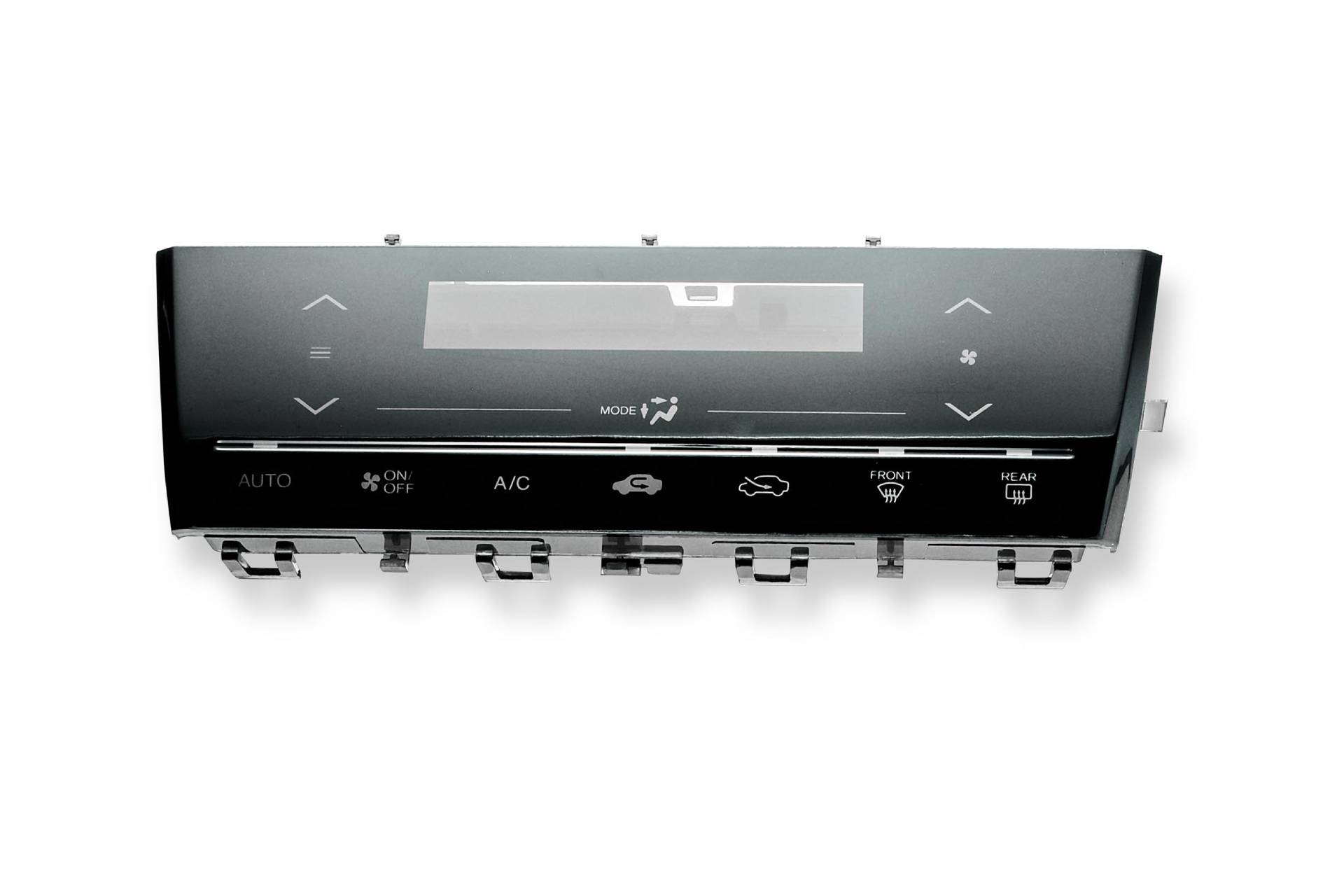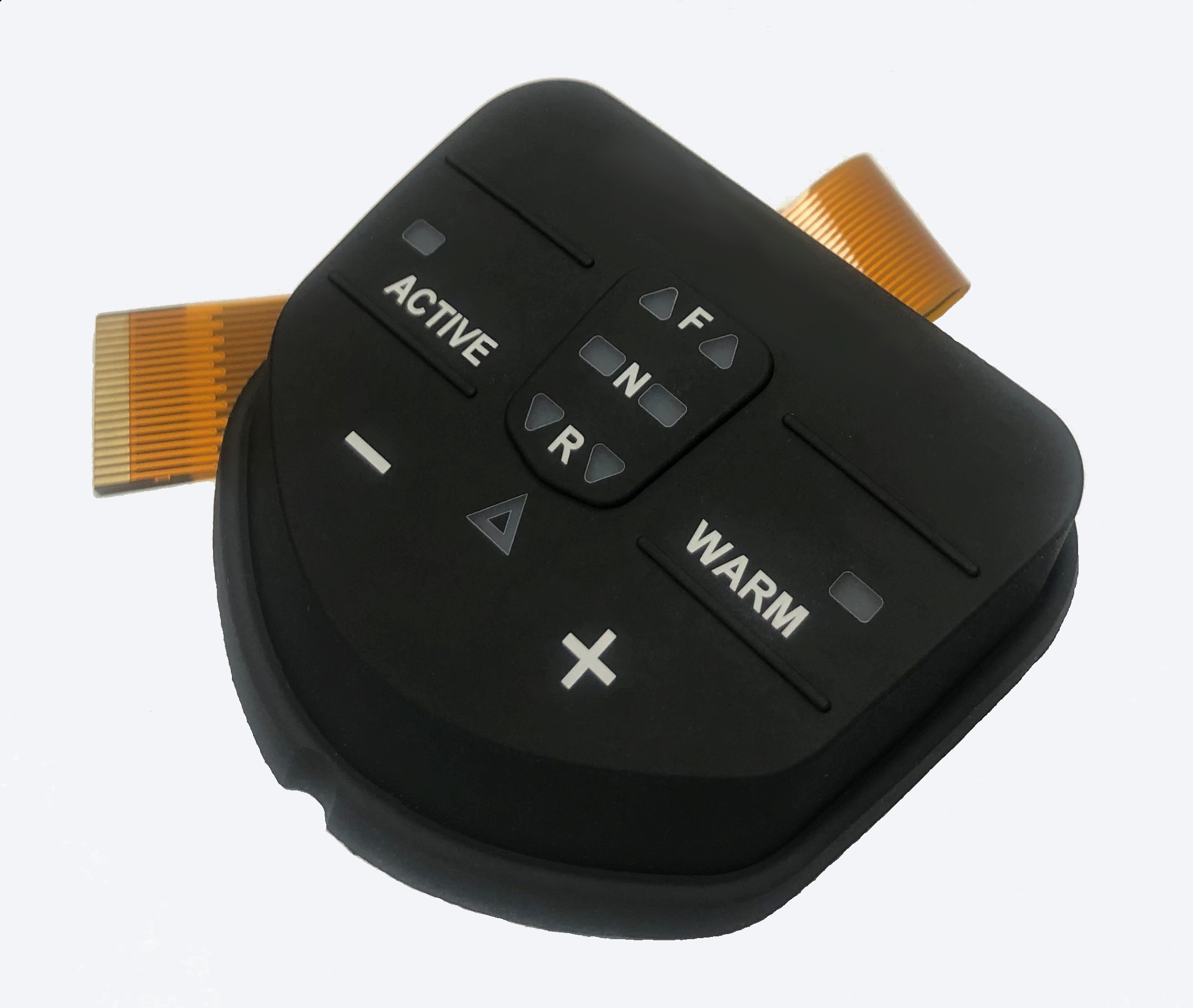Checking Out the Production Refine Behind Rubber Keypads and Their Importance in Modern Gadgets
Rubber keypads are critical in the performance of contemporary devices. Their production process entails careful choice of products and accurate methods. Keypads are developed to enhance individual communication while guaranteeing longevity and dependability. Understanding how these components are made exposes their relevance across various applications. What aspects add to their efficiency, and exactly how do these elements influence individual experience? The solutions may improve perceptions of this daily modern technology.
Overview of Rubber Keypads and Their Applications

Rubber keypads are functional components widely utilized in numerous digital gadgets, varying from customer electronics to commercial devices. Their style permits for a responsive reaction, making them an optimal selection for applications calling for individual communication. Commonly found in products such as remote controls, calculators, and clinical tools, rubber keypads help with simplicity of usage and ease of access.
In industrial setups, they serve vital functions in machinery and control board, where longevity and resistance to ecological elements are important. The non-slip surface improves grasp, promoting reliability popular problems. Additionally, their light-weight nature and personalized forms make it possible for producers to create tailored remedies that fit certain needs. With innovations in innovation, rubber keypads remain to progress, integrating features like backlighting and boosted sensitivity. Overall, their versatility and useful benefits add significantly to the performance of numerous gadgets throughout multiple sectors.
Materials Used in Rubber Keypad Production
Keypad manufacturing counts on an option of materials that improve both performance and longevity. The key product made use of in the manufacturing of rubber keypads is silicone rubber, understood for its excellent resilience and adaptability. This material allows keypads to endure duplicated pressing without shedding form or performance. Additionally, polycarbonate elastomers (TPE) are frequently made use of because of their ease of molding and capacity to give a soft-touch feel.
Coloring agents, such as pigments, are included to guarantee vibrant, long-lasting tones that boost visual charm. Ingredients like anti-UV agents and fire retardants might be blended right into the rubber to boost climate resistance and safety compliance. The choice of products straight affects the keypad's responsive action, longevity, and general performance in numerous tools. Inevitably, the cautious selection of these components is vital for the manufacturing of high-quality rubber keypads that satisfy consumer and sector needs.
The Design Process of Rubber Keypads
When producing rubber keypads, the layout procedure plays a vital role in figuring out capability and user experience. Designers start by defining the keypad's meant use, thinking about variables such as the device it will go along with and the target customer demographic. This initial stage consists of laying out formats that focus on ergonomic facets, making sure the tricks are easily available and properly spaced.
Next off, developers concentrate on the tactile responses preferred from the keypads, which influences the option of materials and essential forms. Prototyping is essential in this phase, permitting designers to examine various styles for convenience and responsiveness.

Manufacturing Techniques for Rubber Keypads
The production process for rubber keypads entails a series of precise techniques that ensure top quality and capability. Liquid silicone rubber (LSR) is typically utilized due to its durability and versatility. The process begins with blending the raw materials, consisting of silicone, colorants, and curing representatives. This mix is after that infused right into mold and mildews designed to form the keypads accurately.
Complying with injection, the shaped keypads undertake curing, a home heating process that strengthens the material (Rubber Keypads). This is usually done in a press, ensuring the keypads achieve the desired solidity and resilience

Quality Assurance Measures in Production
To assure that rubber keypads satisfy high standards of top quality and functionality, rigorous quality assurance actions are implemented throughout the manufacturing procedure. These actions begin with basic material inspection, ensuring that only the highest-grade elastomers are made use of. During the production phase, operators perform normal checks to check parameters such as temperature, stress, and blending times, important for attaining consistent product top quality.
Post-production, each batch of keypads undertakes comprehensive testing, including tactile feedback evaluations and toughness tests to assess efficiency under numerous conditions. Visual inspections are also performed to determine any kind of issues, such as bubbles or variances in structure. Additionally, compliance with industry requirements is validated, making sure that the keypads satisfy security and functionality benchmarks.
The Duty of Technology in Keypad Development
Modern technology plays an essential duty in the growth of rubber keypads by allowing innovative manufacturing strategies that boost accuracy and performance. Furthermore, cutting-edge material selection enables improved sturdiness and responsiveness in keypad performance. These advancements not just simplify production but likewise boost the total quality of the final item.
Advanced Production Techniques
Innovations in manufacturing strategies revolutionize the visit the website manufacturing of rubber keypads, improving both efficiency and precision. Technologies such as injection molding and 3D printing have transformed standard processes, enabling producers to develop complex designs with lowered waste and boosted turn-around times. Automation plays a vital role in this development, enhancing production line and minimizing human mistake. Furthermore, computer-aided layout (CAD) software program enables for intricate customization, making certain that keypads fulfill specific user needs. Quality control measures have actually additionally advanced, including real-time surveillance systems that identify problems early in the production cycle. These advancements not just boost the toughness and capability of rubber keypads yet likewise support the growing need for tailored remedies in numerous markets, from consumer electronics to automotive applications.
Ingenious Material Option
The evolution of manufacturing strategies has actually paved the method for ingenious product choice in rubber keypad advancement. Advancements in polymer scientific research have presented products that enhance sturdiness, adaptability, and tactile feedback. Manufacturers currently utilize thermoplastic elastomers (TPE) and silicone substances, which give exceptional resistance to wear and environmental factors. These products enable the creation of keypads that can sustain long term usage while preserving visual allure. In addition, the combination of layers and additives enhances functionality, such as enhancing grip and reducing friction. The selection of materials is important, as it directly impacts the performance and longevity of keypads in numerous tools, from customer electronics to commercial tools. This innovative strategy proceeds to shape the future of keypad design and usability.
The Impact of Rubber Keypads on User Experience
Rubber keypads greatly influence customer experience through their enhanced tactile reaction, which enables for more accurate communication. In addition, their longevity and longevity add to constant performance gradually, lowering the requirement for frequent substitutes. This combination of functions makes rubber click for more keypads a preferred choice in numerous applications, eventually affecting user satisfaction.
Boosted Tactile Response
Enhancing tactile response substantially influences customer experience, especially in devices that count on keypads for interaction. Rubber keypads provide an unique combination of softness and strength, enabling customers to feel unique comments with each press. This feedback enhances a feeling of control and accuracy, important in applications varying from smart devices to industrial devices. Individuals often report higher satisfaction and performance when connecting with gadgets that feature well-designed rubber keypads, as they assist in quicker and extra precise input. In addition, the ergonomic design of these keypads can minimize finger fatigue, promoting longer usage durations without pain. Generally, the improved tactile reaction supplied by rubber keypads substantially contributes to a much more enjoyable and user-friendly user experience in modern-day innovation.
Toughness and Long life
A vital aspect of user experience with rubber keypads hinges on their resilience and longevity. These keypads are created to endure considerable usage, standing up to wear and tear that usually impacts various other products. The durable nature of rubber assurances that keypads keep their performance and appearance over time, which is important for gadgets frequently made use of in various settings. Customers profit from the integrity of rubber keypads, as they can endure direct exposure to temperature, wetness, and dust fluctuations without deteriorating. This resilience not just enhances individual satisfaction however likewise reduces the demand for frequent substitutes, eventually adding to cost-effectiveness for suppliers. Basically, the durability of rubber keypads considerably influences the overall performance and customer experience in contemporary tools.
Frequently Asked Questions
For How Long Do Rubber Keypads Generally Last in Devices?
Rubber keypads normally last in between 5 to 10 years, depending upon use, ecological aspects, and top quality of materials utilized (Rubber Keypads). Normal deterioration can reduce their life expectancy, impacting performance and customer experience with time
Can Rubber Keypads Be Customized for Details Applications?
Rubber keypads can indeed be tailored for details applications, enabling modifications in dimension, appearance, color, and shape. This versatility allows manufacturers to develop tailored remedies that meet varied user requirements and enhance functionality in various gadgets.
Are Rubber Keypads Eco-friendly?
Rubber keypads are often not taken into consideration eco pleasant because of their petroleum-based products. However, developments in lasting production practices and the development of bio-based alternatives are gradually improving their eco-friendly effect in numerous applications.
What Are Typical Concerns Encountered Throughout Rubber Keypad Production?
Typical issues encountered during rubber keypad you can find out more production include irregular material high quality, mold and mildew defects, incorrect healing times, attachment failings, and challenges in accomplishing exact tactile feedback. These troubles can lead to decreased product performance and client discontentment.
How Do Rubber Keypads Compare to Various Other Kinds Of Key Switches?
Rubber keypads offer a softer feeling and quieter operation contrasted to mechanical buttons, which supply tactile feedback. Rubber keypads may put on out faster and do not have the accuracy that some individuals like in high-performance applications.
The key product used in the production of rubber keypads is silicone rubber, understood for its outstanding strength and versatility. When creating rubber keypads, the design process plays a crucial duty in determining performance and individual experience. Rubber keypads significantly affect individual experience with their boosted responsive action, which permits for more exact interaction. Individuals frequently report better complete satisfaction and performance when communicating with tools that feature well-designed rubber keypads, as they assist in quicker and extra exact input. A crucial element of individual experience with rubber keypads exists in their toughness and durability.